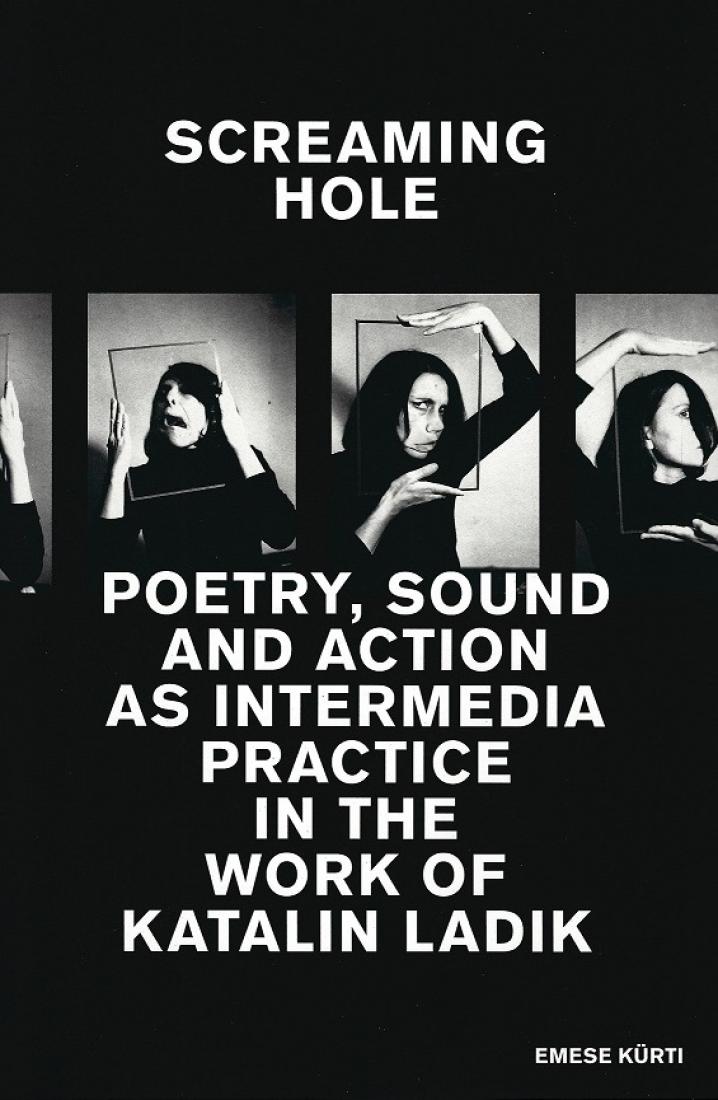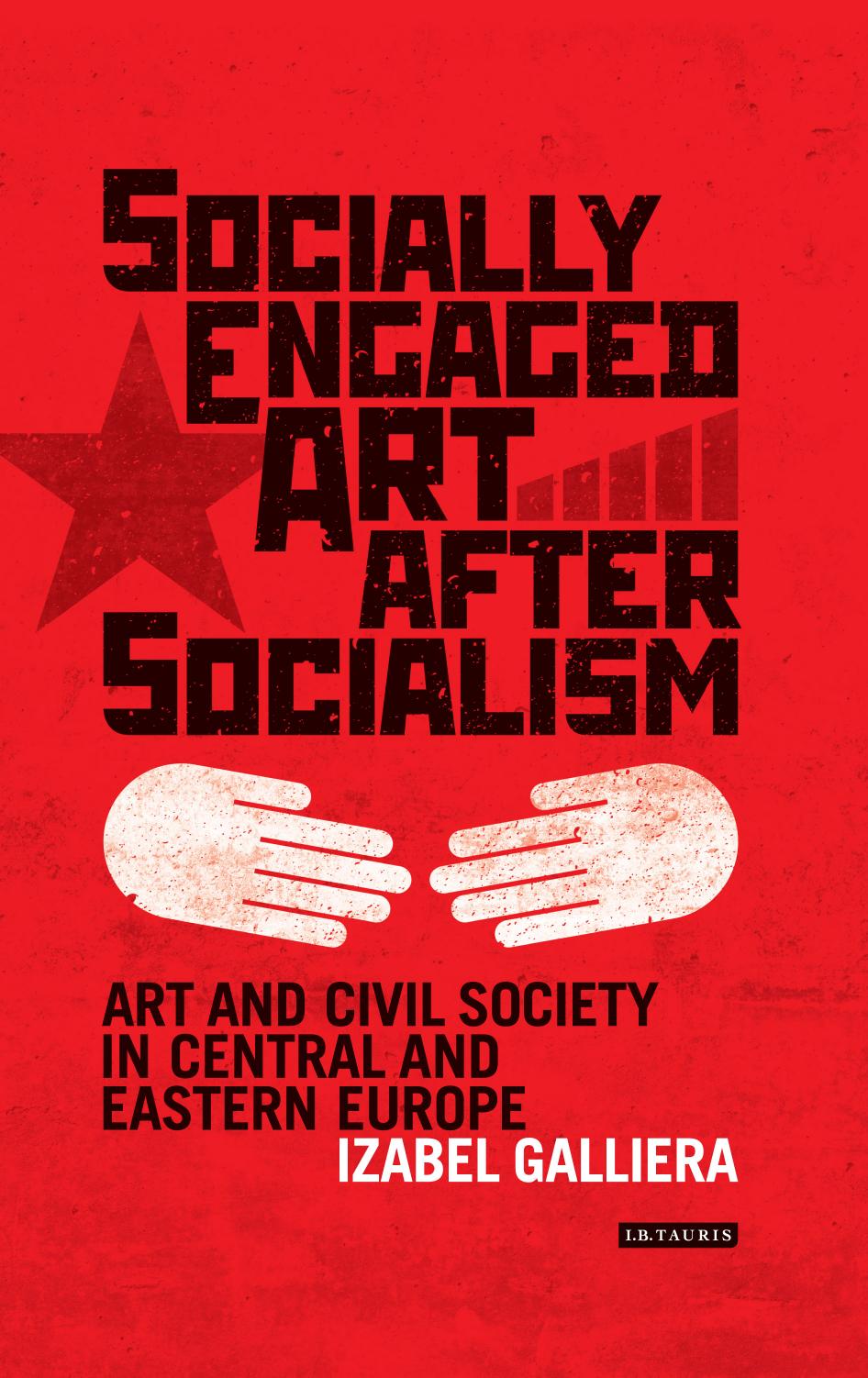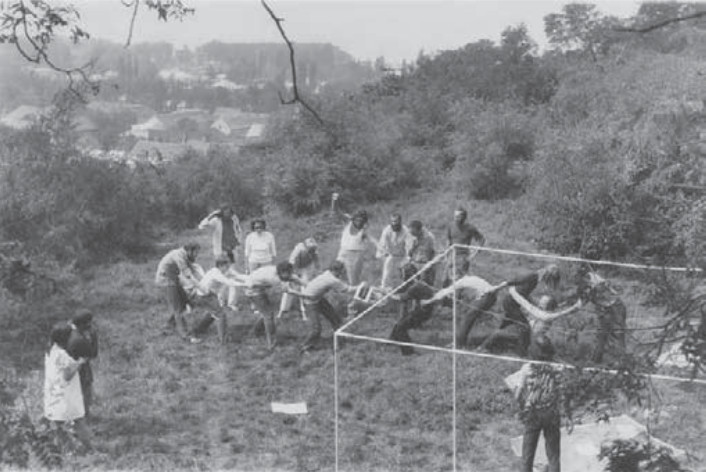Emese Kürti: Screaming Hole: Poetry, Sound and Action as Intermedia Practice in the Work of Katalin Ladik (2017)
Filed under book | Tags: · action art, art criticism, art history, hungary, intermedia, neo-avant-garde, performance art, poetry, serbia, sound art, yugoslavia

“This book focuses on the experimental practice of Katalin Ladik, a poet, performer and actress born in the former Yugoslavia. Her career as a poet writing in Hungarian language began in the intellectual circles of the neo-avant-garde journal Új Symposion (New Symposium) in Novi Sad, but the subversiveness of her feminine practice gave her a distinctive position in the whole Yugoslav neo-avant-garde scene as early as the late 1960s. At the same time, linearity was also being replaced in Ladik’s poetic works by an extended notion of poetry, as she realised her actionism in a complex and mutual intermedial relationship between poetry, sound and visuality. Her performances attracted lively attention not only on account of an interpretation of poetry and sound that was radically new both in Yugoslavia and abroad at the time; her use of the eroticized body also seemed to lack any predecessors in the local avant-garde of the day. Katalin Ladik, who synthesized the traditions of Balkan folk music and Hungarian folklore, could work supraethnically, as it were, in this multiethnic Yugoslav context, using the references of multiple cultures, which suited with persistently international spirit of the avant-garde.”
Translated by Katalin Orbán
Publisher acb ResearchLab, Budapest, 2017
ISBN 9789631283617, 9631283615
247 pages
via Author
PDF (36 MB)
Comment (0)Izabel Galliera: Socially Engaged Art After Socialism: Art and Civil Society in Central and Eastern Europe (2017)
Filed under book | Tags: · art history, bulgaria, civil society, communism, contemporary art, east-central europe, eastern europe, hungary, participation, politics, romania, southeastern europe

“Reclaiming public life from the ideologies of both communist regimes and neoliberalism, their projects have harnessed the politically subversive potential of social relations based on trust, reciprocity and solidarity. Drawing on archival material and exclusive interviews, in this book Izabel Galliera traces the development of socially engaged art from the early 1990s to the present in Bulgaria, Hungary and Romania. She demonstrates that, in the early 1990s, projects were primarily created for exhibitions organized and funded by the Soros Centers for Contemporary Art. In the early 2000s, prior to Bulgaria, Hungary and Romania entering into the European Union, EU institutions likewise funded socially-conscious public art in the region. Today, socially engaged art is characterised by the proliferation of independent and often self-funded artists’ initiatives in cities such as Sofia, Bucharest and Budapest.
Focusing on the relationships between art, social capital and civil society, Galliera employs sociological and political theories to reveal that, while social capital is generally considered a mechanism of exclusion in the West, in post-socialist contexts it has been leveraged by artists and curators as a vital means of communication and action.”
Publisher I.B. Tauris, London/New York, 2017
ISBN 9781784537135, 1784537136
xx+361 pages
Review: Denisa Tomkova (ARTMargins, 2018).
Comment (0)Mutually: Communities of the 1970s and 1980s / Navzájem: Společenství 70. a 80. let, catalogue (2013) [EN/SK/CZ]
Filed under catalogue | Tags: · 1970s, 1980s, archive, art, art history, counterculture, czechoslovakia, film, hungary, participation, photography, video

Catalogue for an exhibition held in March-May 2013 at tranzitdisplay in Prague and The Brno House of Arts, Czech Republic, curated by Barbora Klímová, Daniel Grúň and Filip Cenek.
The selected fragments in this exhibition, borrowed from the archives of Moravian, Slovak, and Hungarian artists, reference different communities within the framework of “unofficial culture” during the period of Czechoslovak normalisation in the 1970s-80s.
Publisher tranzitdisplay, Prague, and The House of Arts, Brno, 2013
44 pages
via Academia.edu

